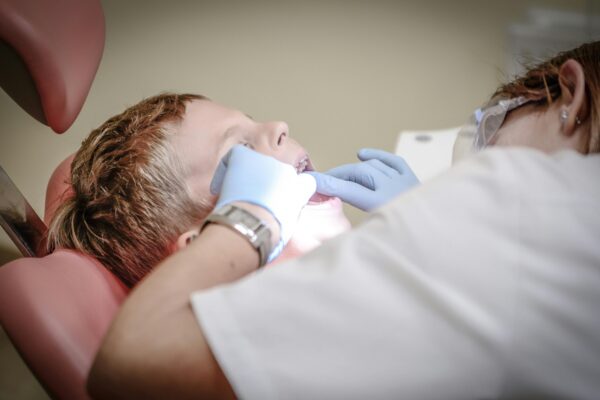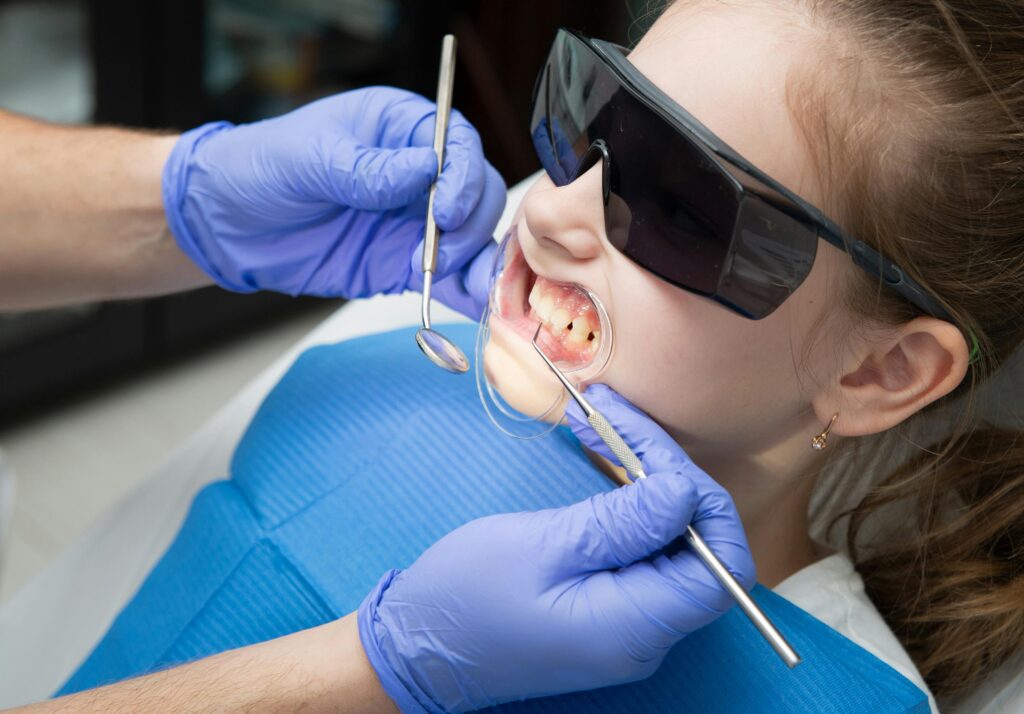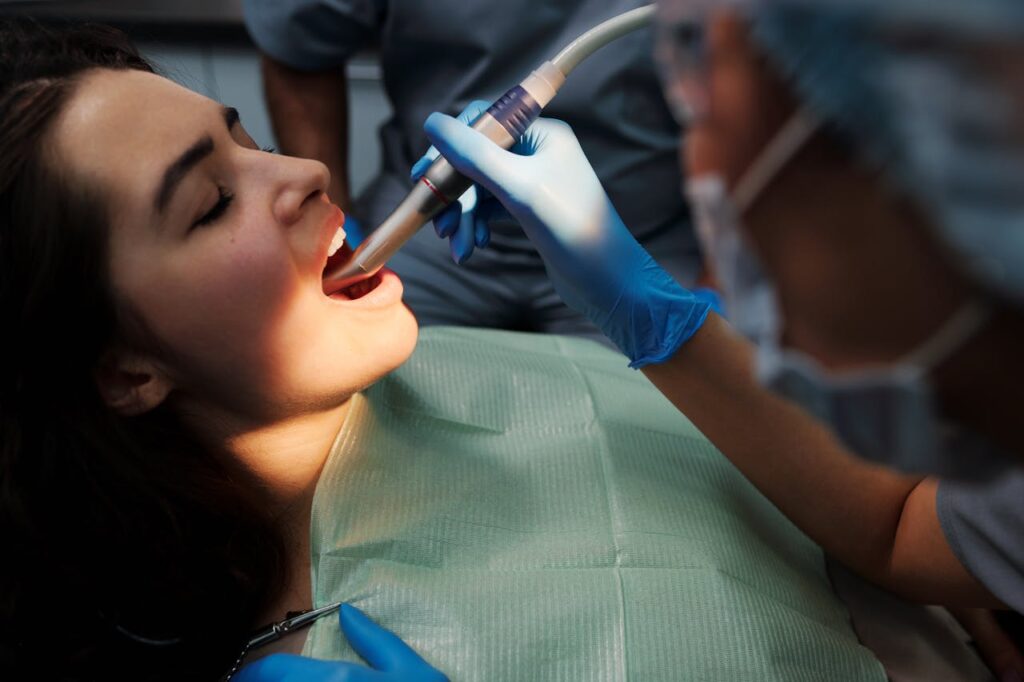Most people think a dental cleaning is just a routine part of their checkup. But deep cleaning teeth is a very different process—and it’s not something to ignore if your dentist recommends it. This treatment goes beyond surface-level plaque and targets buildup that’s hidden below the gums. It’s often needed when signs of gum disease start showing up, and catching it early can make a big difference.
Teens and adults alike can find themselves needing this kind of care. Maybe you’ve noticed bleeding when brushing. Maybe your breath isn’t as fresh as it used to be. Or maybe it’s just been a while since your last cleaning. Whatever the case, understanding what deep cleaning involves—and why it’s done—is key to keeping your mouth healthy in the long run.
What Is Deep Cleaning Teeth? (And How It Differs From a Regular Cleaning)
Deep teeth cleaning is also known as scaling and root planing. Unlike a standard dental cleaning, this procedure goes beneath the gumline to remove hardened plaque and bacteria that brushing and flossing can’t reach.
Here’s how it works:
- Scaling removes tartar from below the gums. Dentists use specialized tools to reach deep pockets where buildup tends to hide.
- Root planing smooths the surfaces of the roots, helping your gums reattach to the teeth and making it harder for bacteria to return.
A regular cleaning focuses only on the visible areas of your teeth. It’s great for prevention but won’t solve issues like gum inflammation or early-stage gum disease. Deep cleaning is designed for those problems. It’s often done in stages—sometimes one side of your mouth at a time—depending on how much buildup there is.
You might need local anesthesia to stay comfortable during the process, especially if your gums are sensitive. While it may sound intense, most people find it manageable and worth doing for the long-term benefits.
Who Typically Needs It? Warning Signs and Risk Factors
Deep cleaning of teeth isn’t something every patient will need—but for those showing early signs of gum disease, it’s often the next step. Ignoring those early signals can lead to more serious problems like gum recession or tooth loss, so it’s important to know what to watch for.
Common Signs You Might Need Deep Cleaning Teeth
- Gums that bleed when brushing or flossing
- Swollen, red, or tender gums
- Chronic bad breath that doesn’t go away
- Plaque and tartar buildup below the gumline
- Loose teeth or noticeable gum recession
These symptoms point to early or moderate periodontal disease. If you’re noticing more than one, it’s worth getting evaluated by your dentist.
Higher-Risk Groups
Some people are more likely to need deep cleaning treatments. That doesn’t mean it’s guaranteed—but it does mean regular dental checkups are even more important.
You may be at higher risk if you:
- Smoke or use tobacco
- Have diabetes
- Are pregnant (due to hormonal changes)
- Skip dental cleanings for long periods
- Wear braces or retainers that make brushing more difficult
- Have a family history of gum disease
Teens undergoing orthodontic treatment with braces can also be at higher risk if plaque builds up around brackets and wires. For adults, years of missed cleanings or untreated symptoms can quietly develop into gum issues without much pain.
According to the American Association of Orthodontists (AAO), orthodontic appliances can make it harder to clean teeth properly, which increases the risk of gum problems if oral hygiene isn’t consistent. That’s why deep cleanings are sometimes recommended during or after orthodontic care.
If your dentist recommends deep cleaning, it’s usually because they’ve seen signs that routine cleaning won’t be enough to reverse the problem. Acting sooner can help protect your oral health—and keep things from getting worse down the line.
What to Expect During the Procedure
If you’ve been told you need dental deep cleaning, you might be wondering what actually happens during the appointment. It’s not as intimidating as it sounds, and knowing what to expect can help you feel more at ease.
Step-by-Step Overview
-
Initial Exam and X-Rays
Your dentist or hygienist will examine your gums and measure the depth of the pockets around your teeth. X-rays may be taken to check for bone loss. -
Numbing the Area
Local anesthesia is typically used to numb your gums and keep you comfortable. This helps reduce any sensitivity during the procedure. -
Scaling
Using hand tools or an ultrasonic scaler, your provider will remove plaque and tartar from below the gumline. This is the part that can’t be reached with regular brushing. -
Root Planing
Once the buildup is removed, the root surfaces are smoothed out. This helps your gums reattach to your teeth and reduces the chances of bacteria sticking again. -
One or More Visits
Depending on how much buildup you have and how sensitive your gums are, the process may be done in sections—like one side of your mouth per visit.
How Long Does It Take?
Each session typically lasts between 45 minutes to an hour. If your mouth needs treatment in all four quadrants, you may need two to four visits.
Deep cleaning teeth isn’t a one-size-fits-all procedure. Your dentist will let you know what your specific plan looks like. The good news is, it’s a very effective step toward reversing gum disease and getting your oral health back on track.
What to Expect After the Deep Cleaning Teeth Appointment
Once your deep cleaning treatment is done, some mild aftereffects are normal—but most are easy to manage with basic care at home. Recovery is usually smooth, especially if you follow your provider’s instructions.
Common After effects
- Slight gum soreness or tenderness
- Sensitivity to hot or cold foods
- Minor bleeding when brushing the first day
- Gums may feel different (in a good way) as swelling goes down
These effects usually improve within a few days. If discomfort continues or worsens, it’s a good idea to check in with your dentist.
Post-Care Tips
To help your gums heal and stay clean, stick to these guidelines:
- Eat soft foods for the first 24–48 hours (think yogurt, eggs, soups)
- Avoid hot or spicy foods that may irritate the gums
- Rinse with salt water or a prescribed antimicrobial rinse to keep bacteria in check
- Brush gently using a soft-bristled toothbrush
- Floss carefully once tenderness decreases
It’s normal to be cautious when brushing near recently treated areas. Just be consistent and gentle—skipping brushing completely will only slow healing.
Most people feel back to normal within a few days. Deep cleaning teeth can give your gums a fresh start, and taking good care of them afterward helps you keep the results long-term.
Benefits Beyond Clean Teeth
Deep cleaning of teeth does more than remove plaque and tartar. It’s a preventive treatment with long-term value—especially for people showing signs of gum disease. The benefits aren’t just about what’s happening under the surface; they also show up in how your mouth feels and functions every day.
Health Benefits You Can Expect from Deep Cleaning Teeth
- Healthier gums – Less bleeding, inflammation, and tenderness
- Reduced risk of gum disease – Helps stop early stages from getting worse
- Fresher breath – Fewer bacteria means less odor
- Better stability for teeth – Prevents gum recession and bone loss
- Improved appearance – Gums may look tighter and less swollen
These improvements not only enhance oral health but also boost overall well-being. According to the American Dental Association (ADA), scaling and root planing is an effective treatment for patients with chronic periodontitis, contributing to better oral health outcomes.
Why Deep Cleaning Teeth is Worth It
By getting a deep cleaning of teeth treatment early, you reduce your risk of more serious issues—like infections, loose teeth, or even tooth loss. For teens with braces or adults with past dental issues, this kind of proactive care can prevent the need for more complex procedures down the line.
Take the Next Step Toward Healthier Gums
If you’ve been told you need a deep cleaning or you’re starting to notice bleeding gums, bad breath, or buildup near the gumline, don’t put it off. Deep cleaning teeth can prevent bigger dental problems and help you feel more confident about your oral health. At Bemiss Dental Care, we make it simple and stress-free to get the care you need.
Our experienced team offers personalized treatment in a welcoming environment, with extended hours to fit your schedule. We also offer an affordable in-house dental plan that includes preventive care for less than $1 a day—ideal for individuals and families alike.
Call 229-469-8492 to speak with our team or book your visit online today. We’re here to help you keep your smile clean, healthy, and strong.



